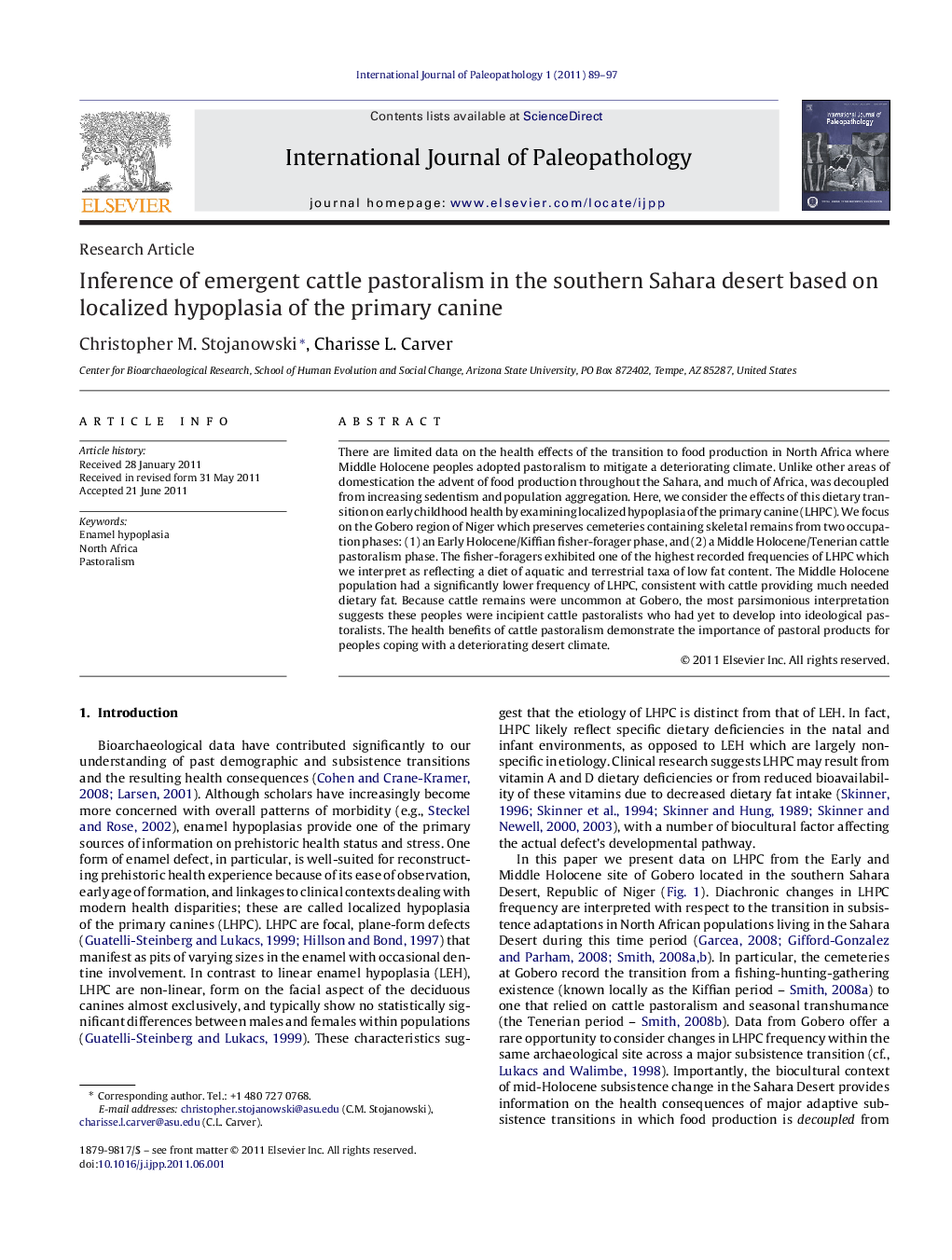| کد مقاله | کد نشریه | سال انتشار | مقاله انگلیسی | نسخه تمام متن |
|---|---|---|---|---|
| 101444 | 1422396 | 2011 | 9 صفحه PDF | دانلود رایگان |

There are limited data on the health effects of the transition to food production in North Africa where Middle Holocene peoples adopted pastoralism to mitigate a deteriorating climate. Unlike other areas of domestication the advent of food production throughout the Sahara, and much of Africa, was decoupled from increasing sedentism and population aggregation. Here, we consider the effects of this dietary transition on early childhood health by examining localized hypoplasia of the primary canine (LHPC). We focus on the Gobero region of Niger which preserves cemeteries containing skeletal remains from two occupation phases: (1) an Early Holocene/Kiffian fisher-forager phase, and (2) a Middle Holocene/Tenerian cattle pastoralism phase. The fisher-foragers exhibited one of the highest recorded frequencies of LHPC which we interpret as reflecting a diet of aquatic and terrestrial taxa of low fat content. The Middle Holocene population had a significantly lower frequency of LHPC, consistent with cattle providing much needed dietary fat. Because cattle remains were uncommon at Gobero, the most parsimonious interpretation suggests these peoples were incipient cattle pastoralists who had yet to develop into ideological pastoralists. The health benefits of cattle pastoralism demonstrate the importance of pastoral products for peoples coping with a deteriorating desert climate.
► This article examines changes in early child health experience using localized hypoplasia of the deciduous canine
► Populations are compared from the early and middle Holocene of North Africa, focusing on the Gobero site in Niger
► Early Holocene foragers had higher frequencies of hypoplastic defects than the middle Holocene pastoralists
► We propose the high frequency of defects among foragers reflects a low fat diet of aquatic and terrestrial African fauna
► The decline in frequency of defects likely reflects the introduction of cattle pastoralism to North Africa and an increase in fat consumption
Journal: International Journal of Paleopathology - Volume 1, Issue 2, October 2011, Pages 89–97